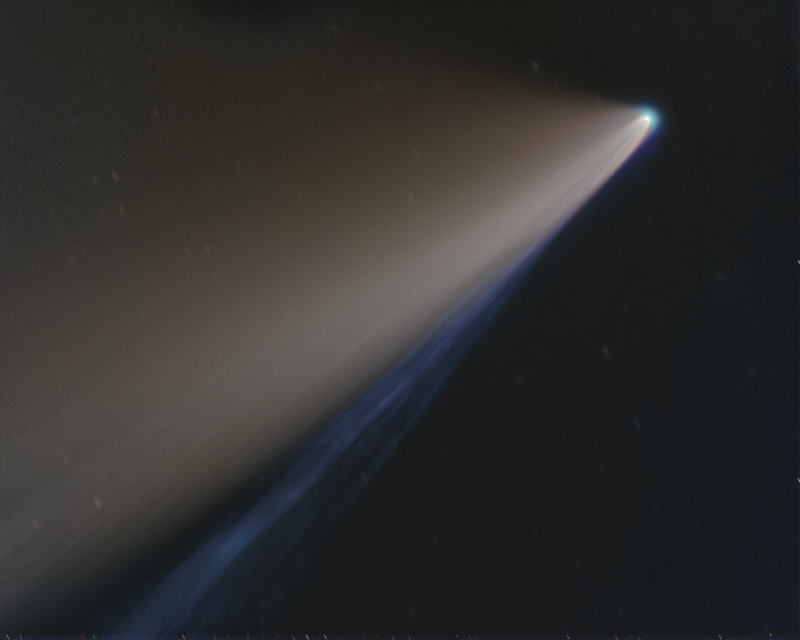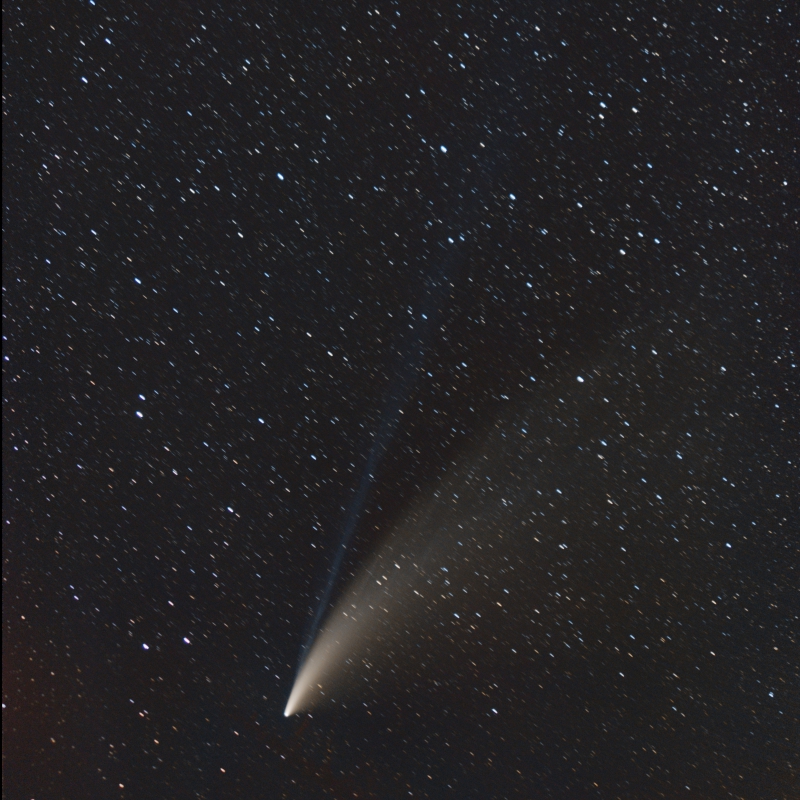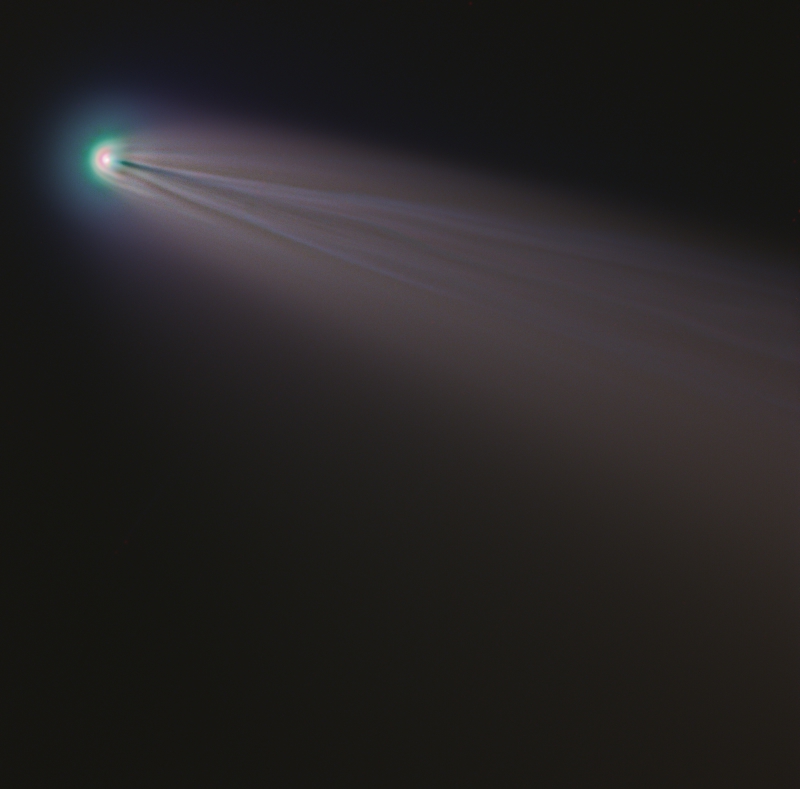Comet NEOWISE

Click to see a full-resolution image (image scale of 3.1 arcseconds per pixel).
Image Caption and Credits: Image of the comet NEOWISE on July 17 acquired from the Observatorio Astronómico de Aras de los Olmos. Vicent Peris (PTeam / OAUV), OAUV, OAO. Entirely processed with PixInsight 1.8.8-6.
Links to the Images and Related Material
Comet NEOWISE Report
NEOWISE has been, for those of us who live in the Northern Hemisphere, the brightest comet that we have been able to admire since the now-distant Hale-Bopp. At the Observatorio de Aras de los Olmos we did not want to miss this unique opportunity and we have prepared this report with the observatory telescopes. We present here a series of photographs that collect the testimony of the comet's passage through its perihelion and the vicinity of our planet.
If we have had the opportunity to get away from the city lights, we'll have been able to enjoy the vision of this comet with the naked eye. From the virgin skies above our observatory, the tail looked like a feather of light a span long. The following photograph, taken in collaboration with José Luis Lamadrid, shows us the appearance of NEOWISE without the use of telescopes:

Image acquired on July 17 with a Panasonic Lumix GX1 and a 25 mm f/1.4 lens at ISO 400. 150×15 seconds exposure.
Click to see a full-resolution image.
© 2020 Vicent Peris (OAUV) / José Luis Lamadrid (OAUV, OAO).
Comets are a cosmic exception because they don't remain immutable in the sky, but are dynamic objects that change from minute to minute. If we photograph the comet head on different days, it will be easy to see significant changes in the envelope of gas and dust. In the following pictures acquired with the observatory's 50 cm telescope, we can see that the comet has radically changed its appearance during the five days that separate the two photographs:

Image acquired on July 17. 10×1 minute and 5×5 second exposures in B and G filters; 5×1 minute and 5×5 second exposures in R.
Click to see a full-resolution image.
© 2020 Vicent Peris (OAUV)

Image acquired on July 22. 8×1 minute and 5×5 second exposures in R, G and B filters.
Click to see a full-resolution image.
© 2020 Vicent Peris (OAUV)
These images were acquired with a Planewave 50-inch f/6.7 CDK telescope and an FLI Proline 16803M camera operating at binning 2×2. In the July 17 image, the shock bows are visible in front of the nucleus, which are produced by the interaction of the solar wind with the comet's ionosphere. On the other hand, in the image on day 22 the spherical coma of the comet has increased significantly in size.
However, to visually understand the nature of the comet in its entirety, it is necessary to build an image that simultaneously collects the tails and the details around the nucleus. To do this, the 20-inch telescope image of July 17 was merged with a wide field image acquired with a 400 mm focal length photographic lens:

Image acquired on July 17. 10×30 second exposures in R, G and B filters.
Click to see a full-resolution image.
© 2020 Vicent Peris (OAUV)
This picture was acquired with a Canon 400 mm f/2.8 lens and an FLI Microline 16200 camera. This wide field image has been combined with the high magnification image taken with the 20-inch telescope, resulting in a picture where we can see from the subtle details of the ionic tail to the shock bows in front of the nucleus of the comet.
We want to end this report with a poetic photograph of the ionic tail, made with the same wide-field telescope and a blue filter:

Image acquired on July 22. 8×150 second exposures in B filter.
Click to see a full-resolution image.
© 2020 Vicent Peris (OAUV)
In addition to this photograph, we have made an animation that shows the sublime changing structure of this tail riding on the comet for an hour and a half:
Image acquired on July 22. Each frame is an integration of 8×150 second exposures in B filter. The total time span of the video is 90 minutes.
© 2020 Vicent Peris (OAUV), OAUV, OAO.
NEOWISE is a comet that will remain in the memory of all of us, a fleeting event in the impassive stillness of the starry sky.